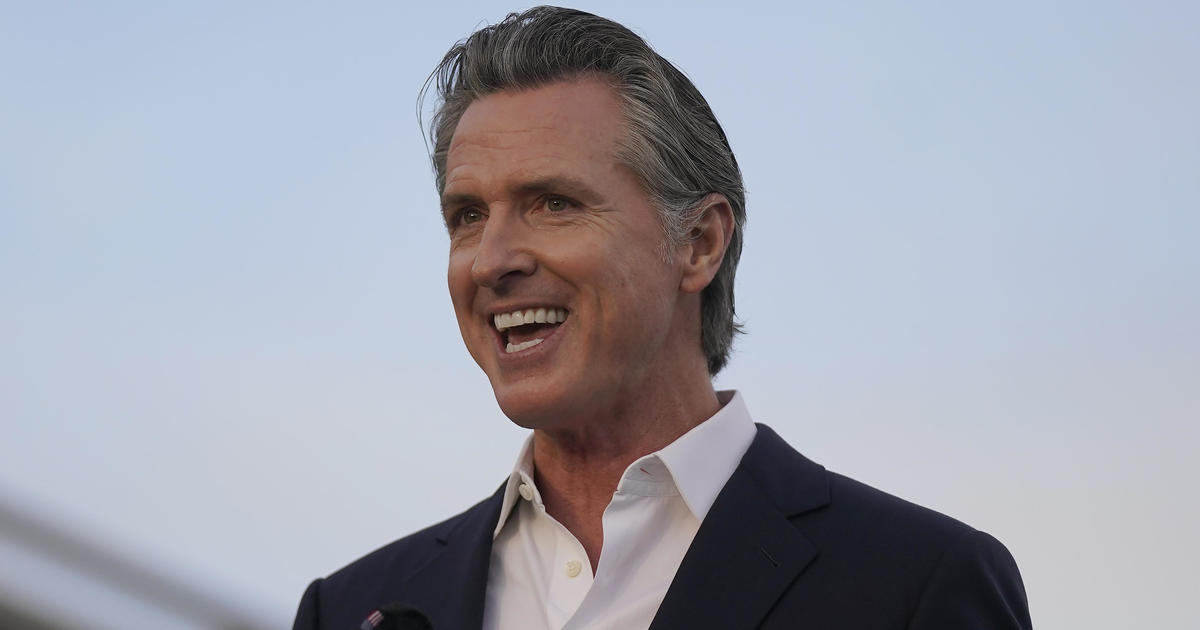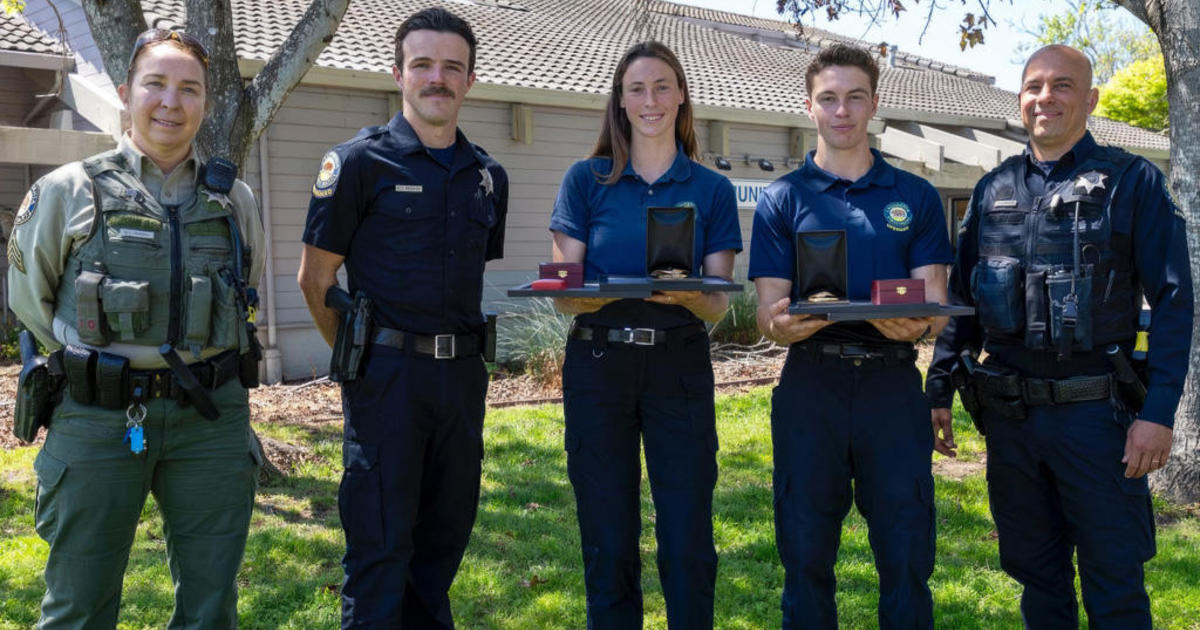Newsom: Re-Opening California 'The Most Challenging And Difficult Phase Of All' In Battle With Coronavirus
SAN FRANCISCO (CBS SF) -- Nearly a month after San Francisco Bay Area residents were ordered to shelter-in-place in an effort to stem the spread of the deadly coronavirus, Gov. Gavin Newsom Monday delivered a glimmer of hope but no solid timeline on when the current lockdown may be coming to an end.
For days, there has been a flattening of the surge in new coronavirus cases accredited to the unprecedented shelter-in-place order that has been extended to early May. However, if Californians were expecting a timeline as to when they can return to parks, schools and business, they came away disappointed.
"In two weeks, if we see a continued decline, not just flattening but a decline of hospitalizations and ICUs and we see this workforce and the infrastructure and the PPE needs met as we anticipate around the first week in May to start seeing the benefits and fruits of that, ask me the question then and we will be in a very different place," said Newsom. "Let's not make the mistake of pulling the plug too early as much as we all want to. I don't want to make a political decision that puts people's lives at risk and puts the economy at even more risk."
A press release issued to coincide with the Governor's daily briefing outlined the different points of consideration that would dictate the state's movement towards ending the stay-at-home order.
"At some point in the future we will need to modify our stay-at-home order," Newsom said in the press release. "As we contemplate reopening parts of our state, we must be guided by science and data, and we must understand that things will look different than before."
He did issue six indicators that the shelter-in-place order could be lifted:
- The ability to monitor and protect our communities through testing, contact tracing, isolating, and supporting those who are positive or exposed
- The ability to prevent infection in people who are at risk for more severe COVID-19
- The ability of the hospital and health systems to handle surges
- The ability to develop therapeutics to meet the demand
- The ability for businesses, schools, and child care facilities to support physical distancing
- The ability to determine when to reinstitute certain measures, such as the stay-at-home orders, if necessary.
As for Tuesday morning, the state's death toll had climbed to 758 -- 71 more since Monday. In the 10-county San Francisco Bay Area, there has been 148 fatalities and 5,341 confirmed cases.
"Today we had a record number of deaths that we are reporting," Newsom said. "758 individuals, stories, families, lives that were torn apart. 71 individuals that lost their lives just since the last reporting I gave you...We are not out of the woods yet. We are not spiking the ball. But we also extend a recognition, in that light, that this can't be a permanent state. And I want you to know that it is not. It will not be a permanent state."
Speaking with Newsom, California Deparment of Public Health Director Dr. Sonia Angell said the state's efforts to flatten the curve have worked, but care must be taken so the infections don't surge once again.
"That doesn't mean that we can just let open and send everybody back into the streets and resume life the way we were," she said. "Because, indeed, if we remove all of our interventions, we again will expect this surge. The opportunity now at this moment is to talk about how we can modify, modify our existing orders in ways makes it easier for all of us but also continues to protect the health of Californians."
Angell said that the state's success with flattening the curve was commendable, but acknowledged that the impact of the shutdown on the state's economy, on California's poor and on the health care system could not be maintained in the long term.
"Where we are now, while exceedingly important -- it's why we are on this curve and why we have the luxury of being able to be thoughtful about modifications -- where we are with the stay-at-home orders simply cannot be sustained. They're very difficult to sustain for a long period of time," explained Angell. "They have an impact on the economy, on poverty and on our health care. Ultimately, as we think about changing modifications, we need to consider not only the direct impact that COVID-19 has on our health and well being, but also realizing as we change modifications, we need to make sure that all of those other areas that impact health...are addressed too."
Angell said the changes being planned would not revert Californians to the ways they were used to before the coronavirus pandemic.
"This time period we are entering is not about going back to where we were before," said Angell. "It's about going forward in ways that are healthy for all of us. But it won't look the same. Different ways that we think about how we do our everyday work will mean that we'll be making changes."
During his daily update, Newsom also talked about the stages the state has taken to battle the coronavirus outbreak.
"We have gone through a series of what I would refer to as pandemic response shifts since we started this journey together in late January," Newsom said in his much anticipated daily coronavirus update Tuesday. "The first of our strategy of containment began when we started to repatriate those first flights coming from mainland China from Wuhan and elsewhere."
"The second phase was the mitigation phase, adopting strategies as we saw the first cases of community spread, to advance to stay at home orders for our seniors, to begin the process of closing down our schools, population-based strategies to mitigate spread that included a state-wide stay at home order. And then the effort to continue practicing physical distancing."
"We moved into the third phase that could broadly be described of the phase of surging, surging our system, not only our hospitals but our alternative care system to meet a potential demand."
"The next phase is the phase I want to talk with you about today that I would frame as an optimistic phase. That we move from surge and we begin to transition into suppression. Ultimately on our way to herd immunity and ultimately to a vaccine. In this transition when we do see light at the end of the tunnel where there is a ray of optimism and hopefulness that this too shall pass. It is also the most difficult and challenging phase of all."
He said the public heath efforts will remain a focus as "we build immunity, our actions will be aligned to achieve the following:"
- Ensure our ability to care for the sick within our hospitals
- Prevent infection in people who are at high risk for severe disease
- Build the capacity to protect the health and well-being of the public
- Reduce social, emotional and economic disruptions
Newsom also cautioned against any expectation that life would return to the way it was anytime soon.
"Like Dr. Angell said -- and this is incredibly important -- there'+s no light switch here. I would argue it's more like a dimmer. This toggling back and forth between more restrictive and less restrictive measures," said Newsom. "More individual accountability, more individual responsibility as it relates to face coverings, as it relates to practicing physical distancing. More individual responsibility if you've been exposed."
Newsom also called the prospect of holding large gatherings of people such as sporting events and concerts "negligible at best" until the creation of a vaccine to develop herd immunity against the virus. National public health officials have warned that a vaccine likely won't be ready until spring 2021 at the earliest.
"I hope all of us are sobered by the reality of the moment, but also left with a little optimism that this is not a permanent state and there is a light at the end of the tunnel," Newsom said.
"I thought he laid it out very rationally," said UCSF Epidemiologist George Rutherford, MD, of the Newsom plan. "I don't disagree at all with his conclusion that we need to sit for a couple weeks, and see how things go."
Rutherford says the Governor was measured, because he has to be. There is still some uncertainty about case numbers. And there are still a lot of decisions to be made about how to peel back the restrictions.
"Do we all want to come off on the same day? Probably a bad idea," Rutherford said, suggesting a phased reboot of the economy. "Do you want to gradually reopen, where we would take certain industries first, like maybe the pharmaceutical industry? Construction, manufacturing, those sorts of things first. Bring retail, more customer-focused stuff, the hospitality industry after that."
Newsom had announced at Monday's coronavirus briefing that he was working jointly on a plan for reopening the West Coast with Oregon Gov. Kate Brown and Washington Gov. Jay Inslee.
A short time later, President Donald Trump was emphatic that the choice to reopen states was up to him alone, writing on Twitter: "It is the decision of the President, and for many good reasons."
At a White House briefing, Trump said his administration has "a very good relationship" with the governors but "the federal government has absolute power" in that decision-making process if it chooses to exercise it.
Newsom and Trump have been political enemies, clashing about immigration, abortion rights and the environment, but both have praised the other's response to the coronavirus pandemic. The governor said he was confident that cooperation on "a road map for recovery" will be maintained.
© Copyright 2020 CBS Broadcasting Inc. All Rights Reserved. The Associated Press contributed to this report.



